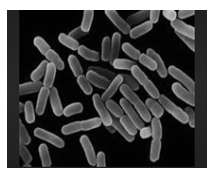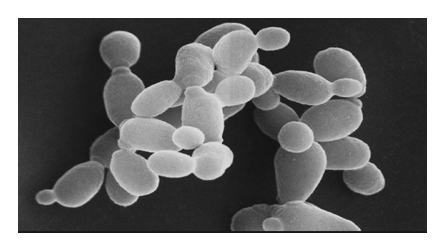Unit - 2
Classification
Q1) Who was the first person to introduce the system of classification?
A1) Carl Linnaeus published a system for classifying living things, which has been useful in developing into the modern classification system. Linnaeus was the first scientist to propose a hierarchal naming structure that suggested information both about what the species was (its name) and also its closest comparative species. The ability of the Linnean system to convey the complex relationships to scientists throughout the world is the reason for it to be so widely used, despite this classification existing for hundreds of years, the classification —taxonomy — is far from dead. Classification of many species, that may be old and new, continues to be officially disputed as scientists find new information or interpret facts in new methods or ways
Q2) Explain the hierarchy of biological classification?
A2) Taxonomic hierarchy refers to the sequence of categories in decreasing or increasing order. Kingdom is the highest rank and species is the lowest rank in the hierarchy or vice versa.
The important taxonomic hierarchies in which different organisms are classified:
Kingdom
The kingdom falls at the highest level of classification among the hierarchy, which is further divided into subgroups at various levels. There are 5 kingdoms at this level in which the living organisms are classified, namely, Monera, Fungi, Plantae, Protista, and Animalia.
Phylum
This is present at the next level of classification and is more specific than the kingdom class. There are about 35 phyla in Kingdom Animalia. For Example – Chordata, Arthropoda, Porifera etc.
Class
Class was the most general rank class present in the taxonomic hierarchy until phyla were not discovered. Kingdom Animalia includes 108 classes including class Mammalia, reptilia, aves, etc. However, the classes used today’s world are totally different from those proposed by Linnaeus and are not used frequently in his era.
Order
Order is a more specific rank than class. The order constitutes one or more than one family that are similar in nature. There are around 26 orders in class Mammalia such as primates, carnivora, etc.
Family
This category of taxonomic hierarchy includes various genera that share less similarities. For e.g., the families in the order Carnivora include Canidae, Felidae, Ursidae, etc.
Genus
A group of similar species forms a genus. Some genera have only one species and is known as monotypic, whereas, some have more than one species and is known as polytypic. For e.g., lion and tiger are placed under the genus Panthera.
Species
It is the lowest level of taxonomic hierarchy. There are about 8.7 million different species on earth. It refers to a group of organisms that are similar in shape, form, reproductive features. Species can be further divided into sub-species.
Q3) Explain unicellular and multicellular organisms?
A3) A unicellular organism is an organism that possess a single cell. This means all life processes or activities, such as reproduction, digestion, feeding and excretion, occur in one single cell. Amoebas, bacteria, and plankton are just some types of unicellular organisms. They are typically microscopic and cannot be seen with the naked eye. Although much smaller, unicellular organisms can perform some of the same complex activities similar to multicellular organisms. Many unicellular organisms can live in extreme environments, such as hot springs, thermal ocean vents, polar ice, and frozen tundra. These unicellular organisms are collectively called extremophiles. Extremophiles are resistant to extremes of temperature or pH, and are specially adapted to live in places where multicellular organisms cannot survive. This unique feature allows scientists to use unicellular organisms in many ways previously only imagined. However, not all unicellular organisms are extremophiles. Many other unicellular organisms live under the same narrow range of living conditions as multicellular organisms, but still produce things necessary to all life forms on Earth.
Multicellular organism, are organism composed of many cells, which vary in degrees that are integrated and independent. The development of multicellular organisms is followed by division of labour and cellular specialization; cells become efficient in one process and are dependent upon other cells for the necessities of life and survival.
A tissue, organ or organism that is made up of many cells is known as multicellular. Humans, Animals, plants, and fungi are multicellular organisms in nature and often, there is specialization of different cells for various functions. Multicellular organisms assign biological responsibilities such as barrier function, circulation, digestion, respiration and sexual reproduction to specific organ systems such as the skin, heart, stomach, lungs, and sex organs. These organs are composed of many different cells and cell types that work together to perform specific tasks.
Q4) Mention three differences between Prokaryotes and Eukaryotes?
A4) Prokaryote, any organism where a distinct nucleus is absent and other organelles due to the absence of internal membranes. One of the best-known prokaryotic organisms is Bacteria. The absence of internal membranes in prokaryotes distinguishes them from eukaryotes. The cell membrane in prokaryotes is made up of phospholipids and forms the cell’s primary osmotic barrier. The cytoplasm in the cell consists ribosomes, that carry out, a protein synthesis double-stranded deoxyribonucleic acid (DNA) chromosome, which is usually circular in nature. Many prokaryotes also contain additional circular DNA molecules called plasmids. Some prokaryotes have flagella. Prokaryotic flagella are distinctive and are mainly for movement.
Eukaryotes
Eukaryote, any cell or organism that possesses a clearly defined nucleus. The eukaryotic cell has a nuclear membrane that surrounds the nucleus, in which a well-defined chromosome (bodies containing the hereditary material) are located. Eukaryotic cells also contain organelles, including mitochondria (cellular energy exchangers), a Golgi bodies (secretory device), an Endoplasmic reticulum (a canal-like system of membranes within the cell), and Lysosomes (digestive apparatus within many cell types)
Q5) How are Autotrophs different from lithotrophs?
A5) Autotrophs: Autotrophs are organisms that can prepare their own food, using materials from inorganic sources. The word “autotroph” is derived from the root words “auto” for “self” and “troph” for “food.” An autotroph is an organism that prepares its own food, without depending on other organisms.
Autotrophs are extremely important and, in the absence of these Autotrophs, no other forms of life can exist. Without plants that create sugars from carbon dioxide gas and sunlight through the process called photosynthesis.
Autotrophs are often called “producers.” They form the base of an ecosystem’s energy pyramid, and provide the food for all the heterotrophs (organisms that must get their food from others) need to exist.
Autotrophs more rarely, obtain chemical energy through oxidation (chemoautotrophs) to make organic substances from inorganic ones. Autotrophs do not consume other organisms; they are, however, consumed by heterotrophs.
Lithotrophs
An organism that obtains its energy from inorganic compounds (such as ammonia) through electron transfer, lithotroph is derived from (Greek word lithos, meaning “stone”), is the ability of organisms to obtain energy by the transfer of electrons from hydrogen gas to inorganic acceptors. It has been proposed that the earliest forms of life on Earth used lithotrophic metabolism and that photosynthesis was a process was later identified.
Q6) Define Uricotelic organisms with example?
A6) Uricotelic: The uricotelic organism excretes uric acid or its salts. In comparison to Ammonia and Urea, Uric acid is the least toxic in nature and the least soluble in water. It can be stored in cells and body tissues without toxic effects and thus needs least water and is highly efficient mode of excretion in comparison to two other methods. Uricotelic organisms include terrestrial arthropods (including insects), snakes, lizards and birds. The excreta of uricotelic organisms look typically like white paste.
Q7) Explain any one habitat with example?
A7. Terrestrial: Terrestrial animals are those who live on the land. They may be simple animals that live on the surface e.g., Farm and wild animals or they may burrow beneath the soil like snakes and rats and thus become sub terrestrial. The surface communities’ animals may prefer to live on rocks, or plains, or desert or damp forest. The aerial animals spend most part of their time in the air like most birds, but they depend on the surface for rest. A number of animals are arboreal, e.g. squirrels and dwell amongst the branches of the tree.
Q8) Mention the three kingdoms of life?
A8) Molecular taxonomy is particularly effective in combination with other methods, usually concerning morphology.
These modern methods have revolutionised the field of molecular taxonomy and population genetics with improved analytical precision and power.
From the tiniest bacterium to the largest blue whale, all living organisms are classified based on their characteristics. The biologist Carolus Linnaeus first grouped organisms into two kingdoms, animals and plants in the 1700s. However, advances in science such as the invention of powerful microscopes had shown an increase in the number of kingdoms. There are now six commonly accepted kingdoms. Each kingdom includes a set of organisms that share similar characteristics. The organisms in each Kingdom are regarded biologically distinct from the others. The three Kingdoms are: Archaea, bacteria and Eubacteria.
Q9) Explain any two-model organism used extensively for study in biology?
A9) E. coli: E. coli, (Escherichia coli) is a rod-shaped (bacillus) Gram-negative bacterium that is frequently used as a model organism. Its striking features such as its ability to grow fast using cheap growth media and availability of molecular tools to perform genetic manipulations are favourable for using E. coli as a model organism in molecular genetics and molecular biology.
Several key discoveries in the field of molecular biology, including molecular genetics, were achieved using E. coli as a model organism. This includes an understanding of the genetic code, the mechanisms of DNA replication, the discovery of the genetic operon systems, and the creation of a genetically modified organism.

Fig: E. coli are Rod shaped bacteria and is used as a model Organism, as it has the ability to be used in molecular genetics and molecular biology.
S.Cerevisiae: Saccharomyces cerevisiae (is a species of yeast). It has been instrumental in winemaking, baking, and brewing since ancient times. It is believed to have been originally isolated from the skin of grapes (it can be seen that yeast is present as a component of the thin white film on the skins of some dark-coloured fruits such as plums; it is present among the waxes of the cuticle). It is one of the most intensively studied Eukaryotic model in molecular and cell biology, it is the microorganism behind the most common type of fermentation. S. cerevisiae cells are round to ovoid, 5–10 am in diameter. It reproduces by budding.

Fig: S. cerevisiae is a special species of yeast and is extensively used for fermentation
Q10) Define Extremophiles?
A10) Many unicellular organisms can live in extreme environments, such as hot springs, thermal ocean vents, polar ice, and frozen tundra. These unicellular organisms are collectively called extremophiles. Extremophiles are resistant to extremes of temperature or pH, and are specially adapted to live in places where multicellular organisms cannot survive. This unique feature allows scientists to use unicellular organisms in many ways previously only imagined. However, not all unicellular organisms are extremophiles. Many other unicellular organisms live under the same narrow range of living conditions as multicellular organisms, but still produce things necessary to all life forms on Earth.